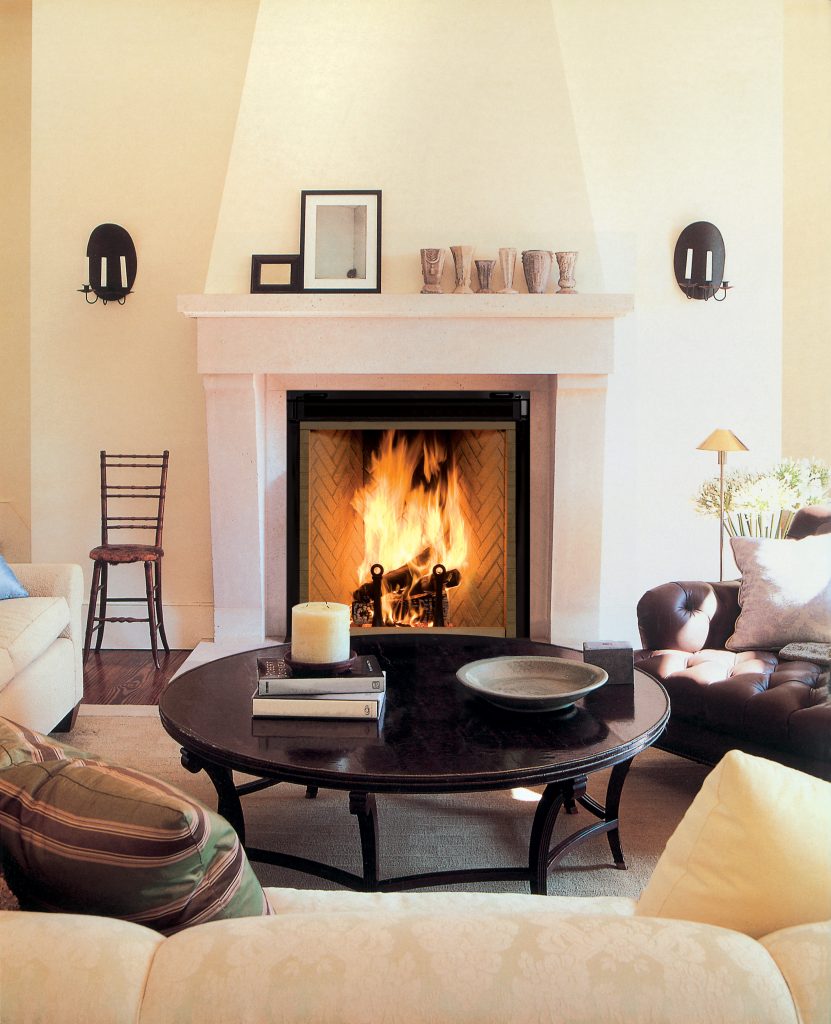Fireside Chat: Wood-Burning Fireplace Design + Installation
Categories: Blog

Pull up a chair for a fireside chat about wood-burning fireplaces!
It’s hard to deny the charm of a crackling wood-burning fireplace. But never assume it’s a simple task to install one. There are a number of things to consider, including design and placement, ventilation, and aftercare. And because it’s an investment, you want to be sure you work with someone who knows the finer details of what’s involved in the process. With over 95 years in the business, Hubert’s knows everything there is to know about installing a wood-burning fireplace in your home, and we’re more than happy to share a few helpful pointers.
Placement and design
When determining where to install your fireplace, the goal is always to run the chimney as much through the structure as possible, as it helps keep the chimney warm. If a large portion on the chimney is exposed to the outdoors, there can be difficulties with lighting the fireplace due to reverse draft. This is largely because cold air is heavier than warm air and the fire has to work harder to vent up and out.
At Hubert’s, we do our absolute best to run the chimney inside, making use of closets and corners, while also minimizing the number of offsets that can impede an effective draft, such as restrictive elbows. Therefore, we try to keep the chimney as straight as possible.
In a chalet, for example, the best placement for a chimney is straight up at the highest peak, so that as little of the chimney as possible is exposed above the roof-line. Imagine how tall the exterior portion of the chimney would be if you placed it at the lowest edge of the roof. When all is said and done, our goal is to create an optimal draft scenario.
Controlling factors
We may aim high, but we’re not perfect. You will never have a 100% effective draft scenario. There are a number of controlling factors that are, well – beyond our control. They include:
- Airstream
- Pressure
- Wind
- Negative pressure
- Air tightness of home
Every house is different. Changing your windows or renovating your home can have a dramatic impact on the air pressure in your home. Seasonal changes or unusual weather can also impact the behaviour of your fireplace. Here at Hubert’s, we do all we can to assess how these factors might impact the effectiveness of your wood-burning fireplace.
After care
Once we determine the best configuration for your fireplace and install it, our work is not done. We will closely monitor your new fireplace to ensure you get draft flowing efficiently within the first burning season. Homes that are particularly air-tight can be challenging – in fact, we’ve even seen burning fires extinguished with the flip of an HVAC switch!
Get crackling
So, have we sparked your interest in the possibility of a new wood-burning fireplace? Give us a call. We’d be happy to talk to you about the viability and possibilities for a wood-burning fireplace in your home. And if you’re in the process of building a new home, it’s never too early to start the conversation.
Because we specialize in fireplaces and have such a long history in the business, we’re extremely well-versed in what will and won’t work. And we’re not shy about raising our concerns. If we suspect your existing design or your home itself is not conducive to a well-functioning, wood-burning fireplace, we will tell you upfront. But we will also do our best to find you viable, alternative solutions.



Comments are closed.